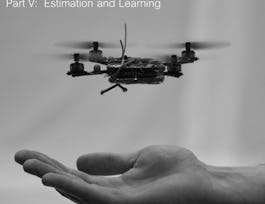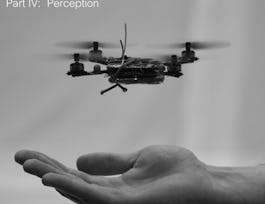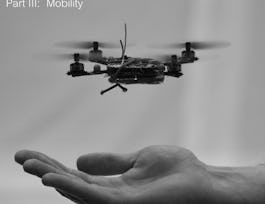Robotic systems typically include three components: a mechanism which is capable of exerting forces and torques on the environment, a perception system for sensing the world and a decision and control system which modulates the robot's behavior to achieve the desired ends. In this course we will consider the problem of how a robot decides what to do to achieve its goals. This problem is often referred to as Motion Planning and it has been formulated in various ways to model different situations. You will learn some of the most common approaches to addressing this problem including graph-based methods, randomized planners and artificial potential fields. Throughout the course, we will discuss the aspects of the problem that make planning challenging.


Robotics: Computational Motion Planning
This course is part of Robotics Specialization
Taught in English
Some content may not be translated

Instructor: CJ Taylor
40,285 already enrolled
Included with 
Course
(1,028 reviews)
93%
Details to know

Add to your LinkedIn profile
4 quizzes
Course
(1,028 reviews)
93%
See how employees at top companies are mastering in-demand skills

Build your subject-matter expertise
- Learn new concepts from industry experts
- Gain a foundational understanding of a subject or tool
- Develop job-relevant skills with hands-on projects
- Earn a shareable career certificate


Earn a career certificate
Add this credential to your LinkedIn profile, resume, or CV
Share it on social media and in your performance review

There are 4 modules in this course
Welcome to Week 1! In this module, we will introduce the problem of planning routes through grids where the robot can only take on discrete positions. We can model these situations as graphs where the nodes correspond to the grid locations and the edges to routes between adjacent grid cells. We present a few algorithms that can be used to plan paths between a start node and a goal node including the breadth first search or grassfire algorithm, Dijkstra’s algorithm and the A Star procedure.
What's included
5 videos4 readings1 quiz3 app items
Welcome to Week 2! In this module, we begin by introducing the concept of configuration space which is a mathematical tool that we use to think about the set of positions that our robot can attain. We then discuss the notion of configuration space obstacles which are regions in configuration space that the robot cannot take on because of obstacles or other impediments. This formulation allows us to think about path planning problems in terms of constructing trajectories for a point through configuration space. We also describe a few approaches that can be used to discretize the continuous configuration space into graphs so that we can apply graph-based tools to solve our motion planning problems.
What's included
6 videos1 quiz2 app items
Welcome to Week 3! In this module, we introduce the concept of sample-based path planning techniques. These involve sampling points randomly in the configuration space and then forging collision free edges between neighboring sample points to form a graph that captures the structure of the robots configuration space. We will talk about Probabilistic Road Maps and Randomly Exploring Rapid Trees (RRTs) and their application to motion planning problems.
What's included
3 videos1 quiz1 app item
Welcome to Week 4, the last week of the course! Another approach to motion planning involves constructing artificial potential fields which are designed to attract the robot to the desired goal configuration and repel it from configuration space obstacles. The robot’s motion can then be guided by considering the gradient of this potential function. In this module we will illustrate these techniques in the context of a simple two dimensional configuration space.
What's included
4 videos1 quiz1 app item
Instructor

Offered by
Recommended if you're interested in Mechanical Engineering

University of Pennsylvania

University of Pennsylvania

University of Pennsylvania

Coursera Project Network
Why people choose Coursera for their career




Learner reviews
Showing 3 of 1028
1,028 reviews
- 5 stars
55.35%
- 4 stars
26.94%
- 3 stars
10.50%
- 2 stars
3.79%
- 1 star
3.40%

Open new doors with Coursera Plus
Unlimited access to 7,000+ world-class courses, hands-on projects, and job-ready certificate programs - all included in your subscription
Advance your career with an online degree
Earn a degree from world-class universities - 100% online
Join over 3,400 global companies that choose Coursera for Business
Upskill your employees to excel in the digital economy
Frequently asked questions
Access to lectures and assignments depends on your type of enrollment. If you take a course in audit mode, you will be able to see most course materials for free. To access graded assignments and to earn a Certificate, you will need to purchase the Certificate experience, during or after your audit. If you don't see the audit option:
The course may not offer an audit option. You can try a Free Trial instead, or apply for Financial Aid.
The course may offer 'Full Course, No Certificate' instead. This option lets you see all course materials, submit required assessments, and get a final grade. This also means that you will not be able to purchase a Certificate experience.
When you enroll in the course, you get access to all of the courses in the Specialization, and you earn a certificate when you complete the work. Your electronic Certificate will be added to your Accomplishments page - from there, you can print your Certificate or add it to your LinkedIn profile. If you only want to read and view the course content, you can audit the course for free.
If you subscribed, you get a 7-day free trial during which you can cancel at no penalty. After that, we don’t give refunds, but you can cancel your subscription at any time. See our full refund policy.

